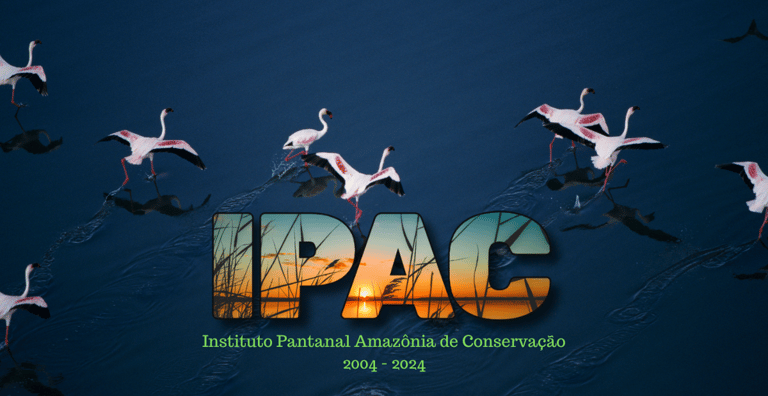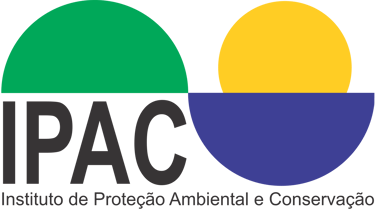TANGARÁ DA SERRA-MT . BRASIL 55 65 99987-8717 IPactangara@GMAIL.COM
Rainwater collector project
Objectives
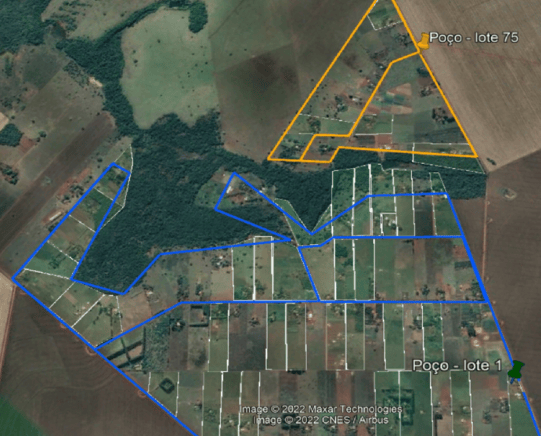

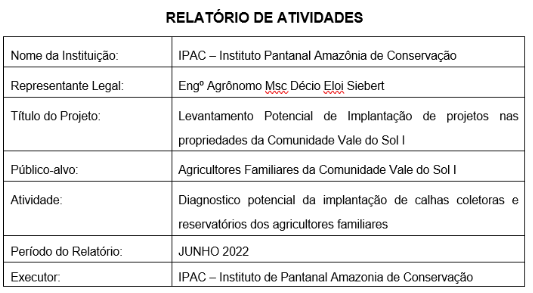

On June 1, 2022, the second data collection began in the Vale do Sol I community, with visits and filling out forms in order to bring to the attention of the producers of that community a project under study to solve the critical water problem in the region and survey the existing potential in each property, in addition to researching whether they would be willing to adhere to the plan prepared in an attempt to minimize water scarcity in the dry season.
In total, 40 properties were visited, that is, around 50% of the community and as can be seen from the map of the region, represented in figure 1, strategic points were reached that allow a diagnosis as close as possible to reality. In parallel, it was researched about milk production in the community in order to make the existing dairy at the association's headquarters viable for the production of milk derivatives, in order to implement another source of income for the association and producers in general. In this research it was possible to notice a certain resistance that some farmers made clear their dissatisfaction with the performance of the Association, the lack of union among the members and the animosity with which things happen, especially when they refer to the water distribution system in the settlement. Looking for ways to understand the problem, we surveyed the situation of the wells that exist today, their distribution network, the frequency with which this water is supplied and the flow of these wells in activity, we arrived at the sketch found in figure 1. It can be noted that the allotment is divided into two sectors, separated by the Ararão Stream. In each sector there is a well that supplies it.
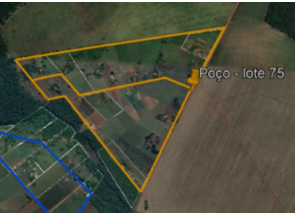

In yellow, we represent the distribution by the well located in lot 75, with an average flow of 3,800 liters/hour, serving an area of approximately 68.4 ha where there are 17 family nuclei. Some properties have no activity at all, others for sale and still others have their own well and do not use the distribution system. In this region there is a greater supply of water, which is daily on some occasions, but there is rarely a lack of water in the pipes. Although this flow is almost constant, it is in small quantity and is restricted to the basic activities of the property, not allowing an irrigation system.
In blue, we represent the location and distribution network of the well located in lot 01. Like the other, it has an average flow of 3,800 liters/hour, serving an area of 315 ha with an average number of 70 family nuclei. It is worth mentioning that, in the same way as the other region of the Association, there are also many inactive, for sale or closed lots.
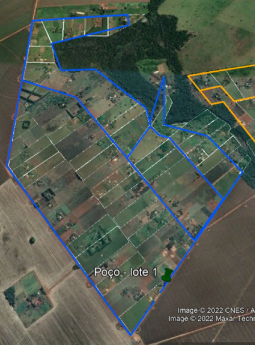

The residents of this region who grow some type of product, have their own semi-artesian wells and the "caipiras" to use in small irrigation and use the water from the network only to serve their homes.
This is justified because, according to information, the distribution water (collective distribution wells) has a pH of around 8 and that of the "caipira" wells are in the average range of pH 3.4. It is known that, according to the Ministry of Health, the ideal pH of water should be maintained between 6 and 9.5. In addition to filtration issues and microbiological aspects, this is the standard considered suitable for consumption.


In this region, it is possible to notice a much greater difficulty in supply, with a constant lack of water in the taps. In the properties closest to this well, the frequency of distribution is restricted to a period of 3 hours a day, so that no other use is made than what is strictly necessary to supply the residence and can reach a larger distribution perimeter. Even adopting this restrictive system, the most distant areas constantly suffer from the total lack of water in the distribution network and the owners who have greater purchasing power, build their own semi-artesian wells and the others use the "caipira" well to meet their needs and those of the property.
In the table below you can better visualize how water distribution is carried out in the Vale do Sol I Community. All the values in the table were provided by the producers, in visits to the properties, searches of areas and locations by Google Earth and data informed by the president of the Vale do Sol I Association, Mr. Vanderlei.
Research Relating to the Installation of Water Collectors and Construction of Storage Tanks
Covered area existing on the properties.
These data vary greatly since each property has its own structure and size, consistent with its needs for housing, storage, shed for tools, garages, shed for breeders and greenhouses for growing seedlings and vegetables. Thus, in order to have a better understanding, these covered areas were divided into strips according to the average footage they have, as shown in the graph below.
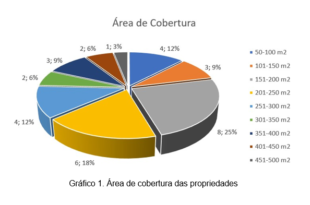

Analyzing the graph, it can be seen that the largest amount of coverage area is located in 8 properties, in a range of 151 to 200 m2, which corresponds to 25% of the properties surveyed.
Next are 6 areas in the range of 201 to 250m2 (18%) of covered area.
The areas of 50 to 100m2 (4) and those of 251 to 300m2 (4) come in third place with 12% each of the total area covered.
From 101 to 150m2 (3) and from 351 to 400m2 (3) represent 9% of the covered area. The areas in the range of 301 to 350m2 (2) and from 401 to 450 (2) correspond to 6% and the area from 451 to 500m2 corresponds to 3%, that is, a single property.
If added together, all the areas covered in these surveyed properties would have an approximate value of 7,690m2 of catchment area.
Community well utilization and distribution
Acceptance of the rainwater collection and storage project.
Current Community Production
As found in the previous survey, water is insufficient to produce a significant amount of products to supply the market. But they asked again what products they can still plant, what is the monthly production and how these products are being sold (retail or wholesale). Of all, only 16 produce and sell their products at fairs and markets, but they had some difficulty in measuring the amounts received from sales since the production that is taken to the fairs is not always sold and some products end up returning and used in animal feed and their own consumption. These are some of the products that are usually produced for sale:
• Milk, chicken, vegetables, okra, watermelon, green corn, cassava, tangerine, banana, lemon, poncan, pepper, pumpkin, saffron, acerola, granola, pineapple, cajamanga, jiló, zucchini. These producers who deliver their product directly to the producer's market, once or twice a week, take an average of R$ 2,300.00 per month.
10 producers do not produce anything on their properties. Some are for sale, others abandoned and some still only keep a caretaker who receives a salary to take care of the property.
13 producers plant and raise animals only for their own and their family's consumption. They are usually retirees who have children who live in the city.
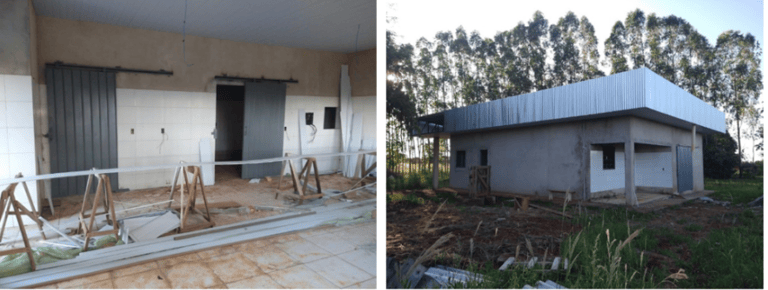



Milk production
Production in the Community
The owners were asked if they produce milk on their properties, if this milk was for sale in the dairy or privately, for consumption or if they did not. Next, the situation in which the Association's Dairy is found was presented (figures 8 to 11), with practically 98% of its structure completed, with only a joint effort missing for its completion and purchase of equipment to start production that would benefit the entire community. Based on this clarification, they were asked if they would be interested in acquiring dairy cows that would guarantee the production of the raw material for the full operation of the Dairy.
Of the 25 producers who do not produce, 22 were interested in acquiring dairy cows as long as there were favorable conditions on the part of the government to facilitate the purchase, the construction of structures, the formation of pastures and the planting of grass to feed these cattle in the dry season, since their space for this purpose is quite small and they have no intentions, at first, to occupy the space of agriculture.
The producers, who today already have some animals that produce milk for consumption and sales in the neighborhood, showed interest in increasing production since they already have the structure ready for this purpose.
On the other hand, the producers who produce larger quantities and sell to a dairy outside the city, have shown interest in supplying their production and even doubling the existing production, as long as there is a strong, reliable association that pays the equivalent amount to what they receive today from large dairies, which seek milk on the property. One of the producers raised the problem regarding the transportation of this milk, since the Association would not have the conditions or means to pick up this milk on the properties.
Dreams and pretensions
Asked about the solution to this problem of lack of water and having conditions to practice irrigated agriculture, for example, would anything change in their plans regarding production on a larger scale? What would they like to do at first? A large part, usually made up of older people, said they have plans for a lighter and more productive agriculture such as vegetables, legumes and fruits, in addition to raising free-range or semi-free-range egg production birds. Other producers would like to invest in cattle raising, raising dairy and beef cattle, in confinement and sheep, being treated in a trough with sugarcane and irrigated capiaçu, in parallel with the fruit and vegetable crop. The vast majority would opt for irrigated corn, beans, rice, cassava, bananas, coffee, large-scale diversified fruits, tomatoes, grapes, pineapples, cassava and passion fruit, for sale in natura. Others already have plans to cultivate products to be industrialized within the Association itself, such as cassava flour, cheese, jammed sweets, the industrialization of saffron, paprika, pepper and other preserves.
Results achieved
The main problem of family producers in Vale do Sol I was identified;
Bring the project to the attention of the community;
Complement the result for the preparation of a new workshop;
Identified new problems and aspirations of the residents.
Institute for environmental preservation and conservation
We defend environmental and cultural preservation.
CONTACT
contato@ipac.org.br
55 65 99987-8717


